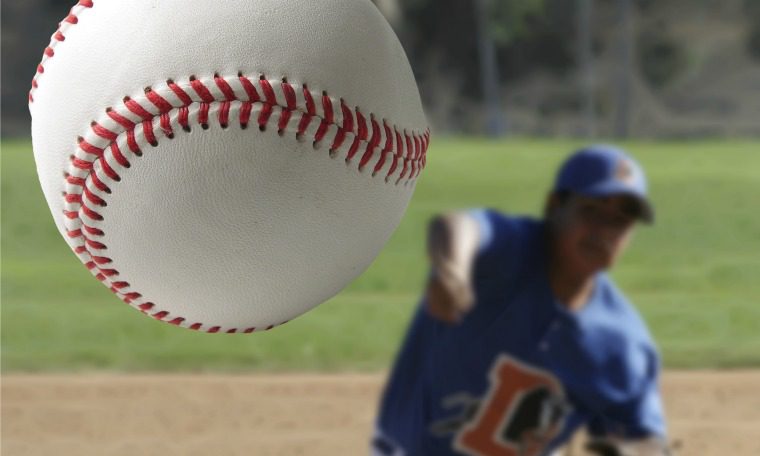There’s no way to escape it: learning and development organizations often have to provide more training with less budget. As a result, sales veterans and higher end performers are often left out of learning plans to address more pressing issues like on-boarding or large scale change initiatives. Should learning leaders invest in this group, and is there a more effective strategy to increase the skill of senior, experienced sales leaders?
To answer the first question, yes. Increasing the performance of skilled and experienced salespeople can realize very high returns very quickly. Consider the Pareto principle — 80 percent of your revenue will come from 20 percent of your salespeople — as incentive to invest in your best performers. The problem is creating and delivering learning for this group is a unique challenge and requires a unique strategy.
Professional athletes and their coaches face a similar challenge, as the investment in ‘good to great’ is also critical to their success. The curveball, for example, is arguably the hardest pitch to hit, even for Major League Baseball players. The batting average against the curveball in the big leagues is .221 or a little over 2 hits per 10 swings; in contrast the fastball is over .300. There are several variables working against a hitter trying to put the ball in play.
First, the diameter of a baseball is 3 inches, and the sweet spot of the bat is only 2 ¾ inches. A curveball comes in at an average of 77 mph and will move, or break an average of 14 inches through a strike zone of 36 inches. All of these variables combined make it incredibly difficult to hit, and the curveball is only one of three or four pitch types a pitcher has in his arsenal. The hitter has about 0.53 seconds to decide what kind of pitch is coming and whether it will remain in the strike zone.
Big league hitters spend a lot of time practicing hitting curveballs. They’re professionals who get paid big bucks and still only connect twice in every 10 attempts. Consider the challenge of performing a skill, whether it’s hitting curveballs or making a sale, at a very high competency level for an extended period, but still wanting or needing to improve. Understanding how a highly skilled baseball player could become better at hitting a curveball could offer some insight.
There was an old but still valid study from Cal Poly — Hall, Domingues, Cavazos, 1994 — that focused on measuring the best way for skilled baseball players to improve their ability to hit curveballs. The Cal Poly baseball team was divided into three groups. The control group would take no extra practice. They would keep the status quo practice schedule, just like the sales professional who has been doing it the same way for a long time. The second group took additional batting practice, 45 pitches divided into three types but delivered sequentially: 15 fastballs, followed by 15 changeups, followed by 15 curveballs. This is the standard way to learn a new skill called blocked practice, or practicing the same skill over and over again until it’s mastered. The third group took the same amount of extra batting practice and pitches but with a twist.
The batter did not know which type of pitch was coming, like in real situations. It could be any one of the three pitches delivered in a random order. This is called interleaved practice. The extra practice went on twice a week for six weeks. The three groups were tested on their ability to hit a curveball before the study began and then again at the end of the six weeks. The second and third groups had coaches working with them to target and practice the skills needed to improve their batting, focusing on how to identify the rotation of the ball, where the pitcher released the ball, etc.
The control group improved by 6.2 percent. The second group, using blocked practice, improved by 24.7 percent. The third group, using interleaved practice, improved by 56.7 percent. The conclusion? Extra practice is valuable, but how that practice is applied makes a dramatic difference.
The third group leveraged all of the successful practice principles. Their practice was deliberate, meaning it was focused on improving a particular skill — hitting a curveball. Progress was measured, and each player received coaching and performance feedback. Their practice was spaced. By taking extra practice a couple of times per week the players had an opportunity to forget what they’ve learned, then have it reinforced by the act of recalling it. This recall process helps move what they’ve learned from short term to long term memory. They also had the opportunity to reflect on their progress and coaching advice. Most importantly, and the point of the study, was that mixing pitch types using the principles of interleaved practice made the most significant difference in player performance.
If improving an experienced player/salesperson’s skills is the objective, practice should be the strategy, not additional learning or re-training. The players did not attend a workshop on how to hit a curveball or read a book, they practiced with deliberate feedback and objectives.
The learning strategy for seasoned sales professionals becomes about incorporating deliberate, spaced and interleaved practice into a targeted learning program. Scenario-based practice, or roleplay, can be very effective if all three elements are integrated into learning design and delivery. Defining and measuring the same skills over a cohort of salespeople, giving consistent feedback, coaching from the customer’s perspective and delivering the scenarios in a realistic manner are the main challenges in a successful program. Recording videos or assuming managers are practicing with their salespeople is not the answer, deliberate practice is.
Randy Sabourin is co-president of Practica Learning and co-founder of Anderson Sabourin Consulting Inc. To comment, email editor@CLOmedia.com.











